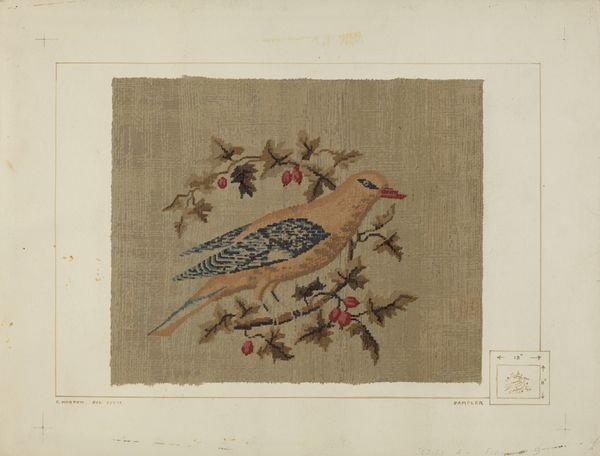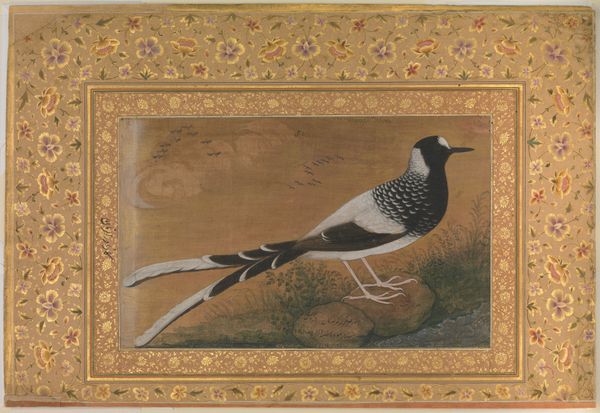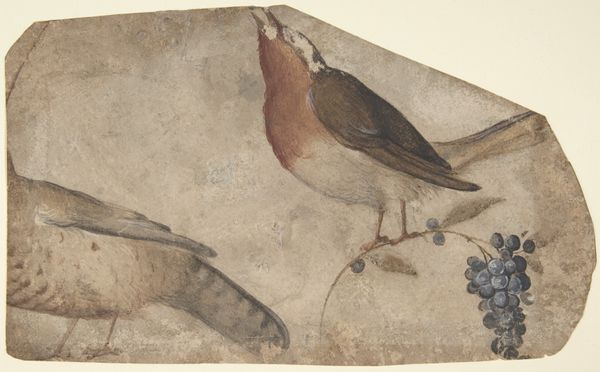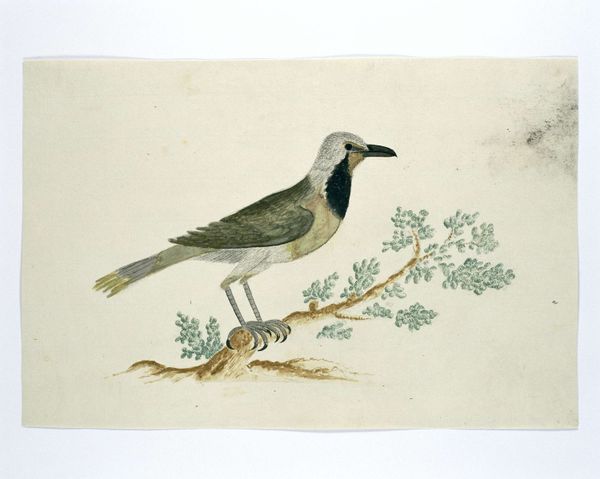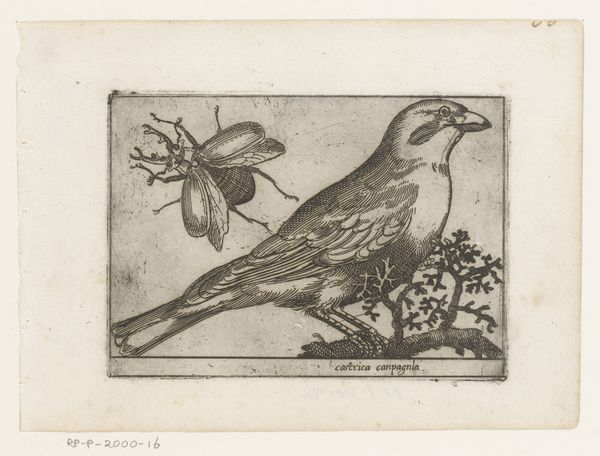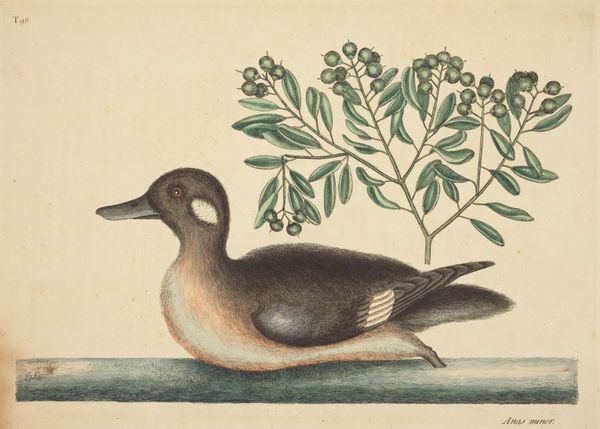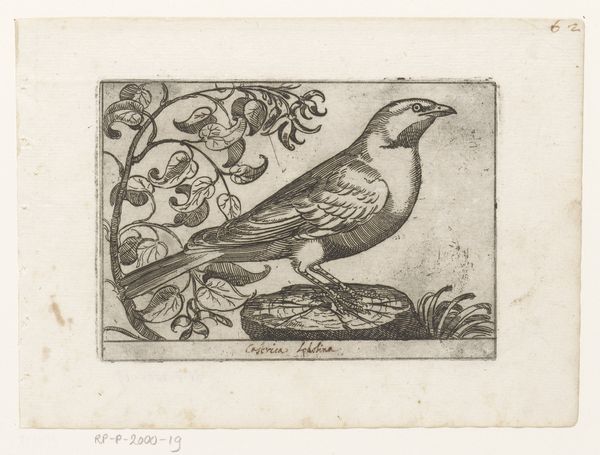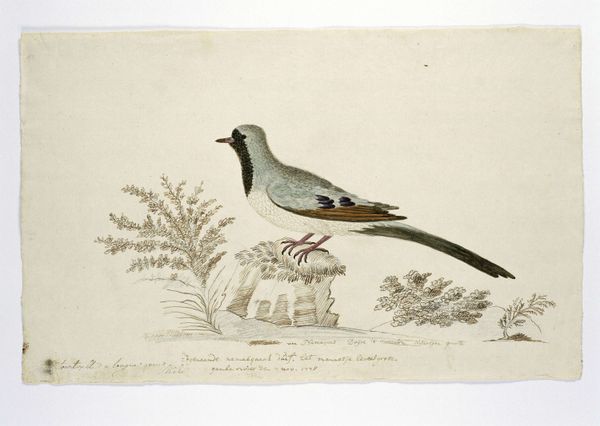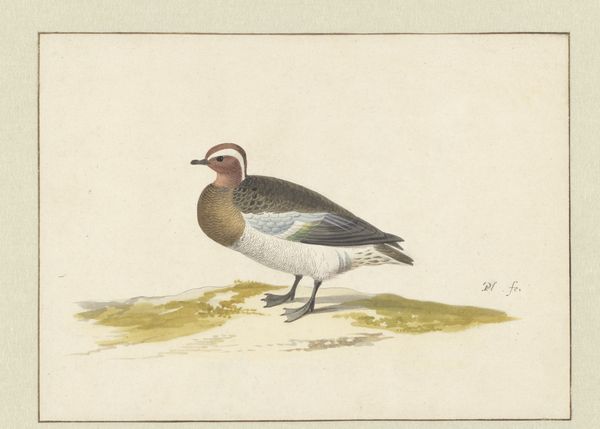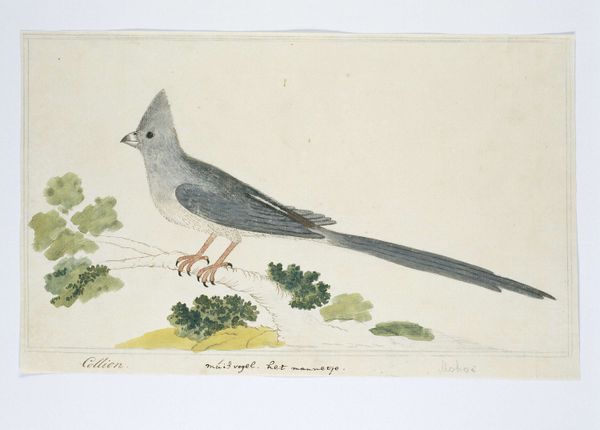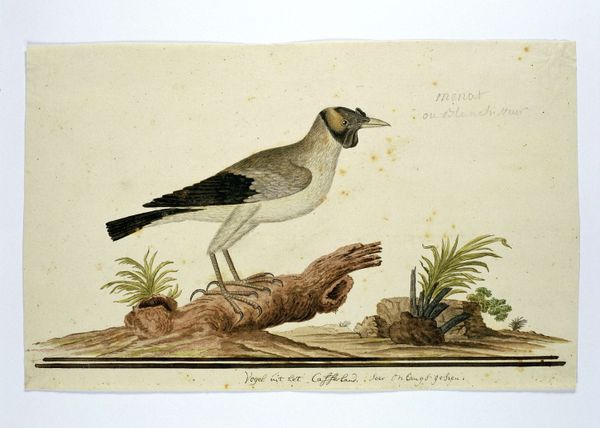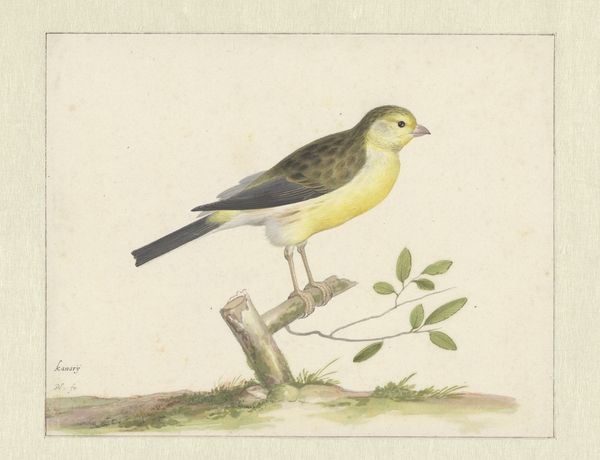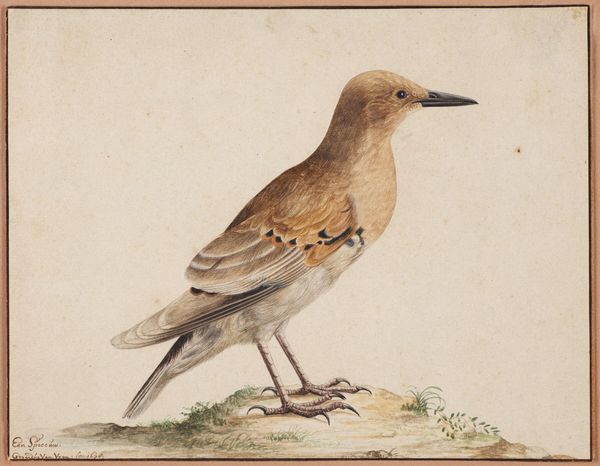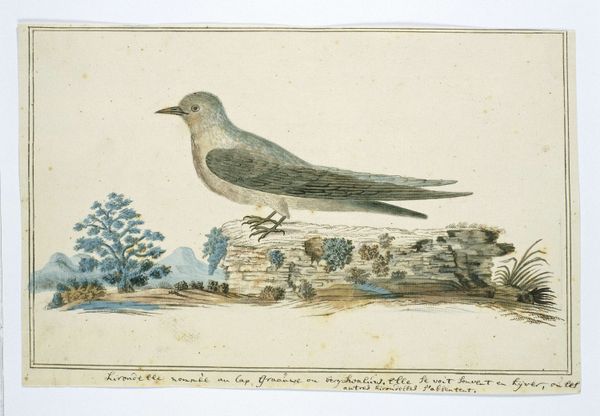
#
toned paper
#
water colours
#
bird
#
possibly oil pastel
#
handmade artwork painting
#
coloured pencil
#
underpainting
#
painting painterly
#
islamic-art
#
watercolour bleed
#
watercolour illustration
#
watercolor
Dimensions: Overall: H. 4 1/4 in. (10.8 cm) W. 7 1/4 in. (18.4 cm) Painting: H.3 7/8 in. (9.8 cm) W. 6 7/8 in. (17.5 cm)
Copyright: Public Domain
Curator: Let's take a closer look at "Study of a Bird" by Riza-yi 'Abbasi, created sometime between 1609 and 1659. It’s currently housed here at the Metropolitan Museum of Art. The work utilizes watercolors, possibly with some oil pastel and colored pencil on toned paper. Editor: My first impression is of an incredible delicacy. The meticulous brushwork gives it a somewhat dreamlike quality, even ethereal. There’s also a definite sense of stillness, a kind of poised watchfulness emanating from the subject. Curator: Riza was a master of line. Observe how he defines the bird’s form. In Persian and Islamic art, birds often symbolize the soul's journey, the longing for spiritual union. Considering the period, it is hard not to consider Sufi themes and their metaphors concerning enlightenment. Editor: Precisely! And formally speaking, note the contrast between the smoothness of the bird’s plumage, rendered in those delicate watercolor washes, and the more textured background with the carefully delineated grasses and foliage. This juxtaposition amplifies the focal point and subtly pushes it toward the viewer. Curator: You are correct in that this composition is typical of Riza-yi 'Abbasi's style. A figure—in this case, a bird— dominates a sparse, dreamlike landscape. It also continues an older tradition within Islamic art. It synthesizes acute observation of the natural world with symbolic weight to convey broader themes. Editor: Do you see how the framing accentuates the image? The bordering emphasizes that we are stepping into another world when viewing this artwork. Even those minuscule inscriptions speak to that experience. The more I consider it, the more apparent the intentionality behind this visual strategy becomes. Curator: Yes, that duality is definitely central to Riza's artistic vision and echoes throughout Persian art history. Studying the nuances and techniques employed within a work like this can lead us to understand deeper cultural values and individual psychological expression through visual metaphor. Editor: Indeed, by observing this image so intently, hopefully the listener also is struck by the sheer amount of detail and work involved in rendering a single avian figure. It gives the modern viewer so much to chew on and digest.
Comments
No comments
Be the first to comment and join the conversation on the ultimate creative platform.
